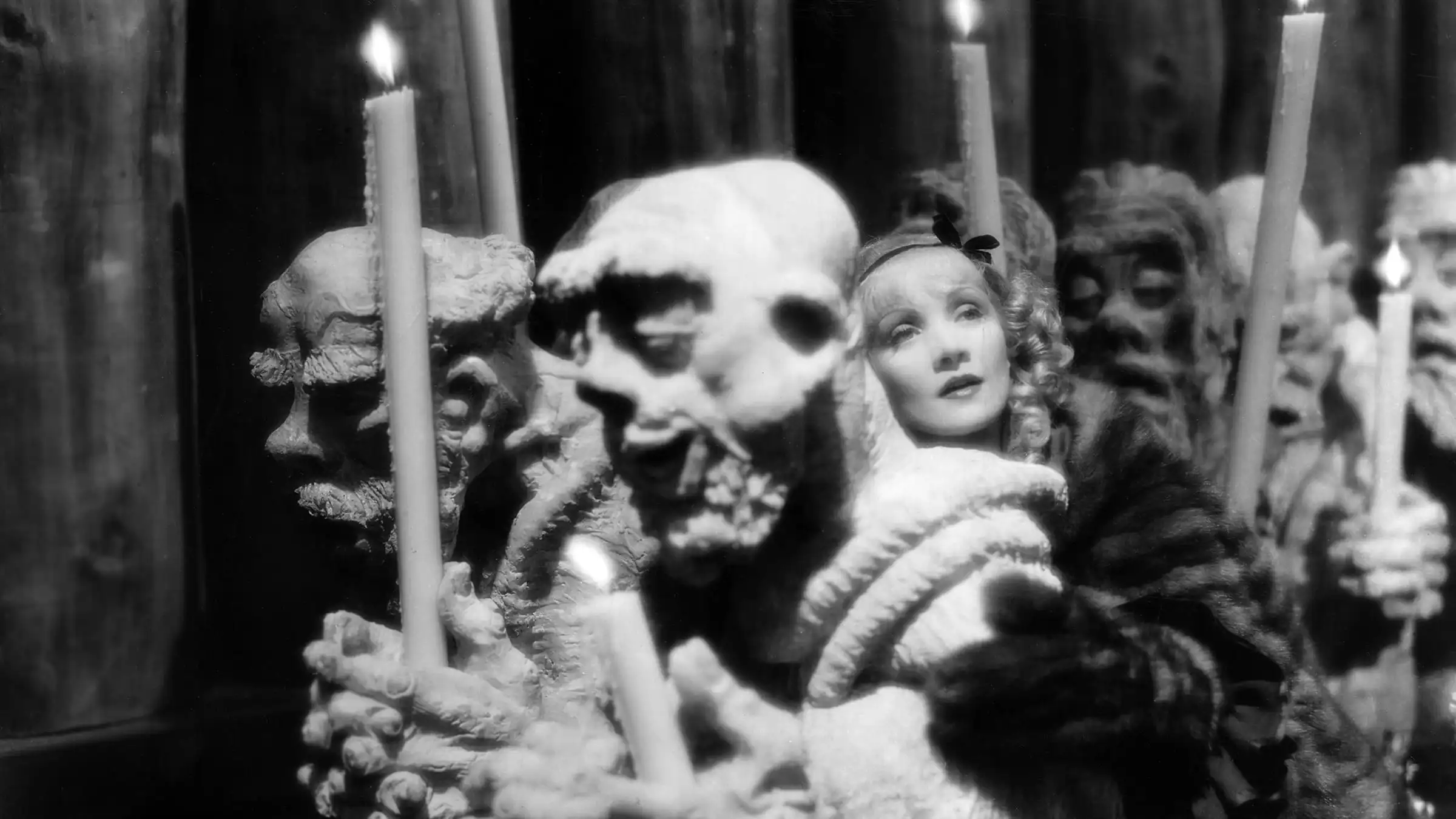In “How to Marry the Man of Your Choice,” self-help sultan Margaret Kent gives advice to all those afflicted with mania for males. She cautions her adherents that they should not deploy sex as a weapon against their men. Sex, she states, is as powerful as “the hydrogen bomb,” and therefore should be used only “in the most extreme circumstances.”
In Josef von Sternberg’s “The Scarlet Empress,” Princess Sophia Frederica finds herself in extreme circumstances. She is forced to leave her parents, change her name to Catherine and travel to Russia to become Peter III’s bride. Although Peter is the heir to the throne, he is crazed, fixated on his toy soldiers rather than the future of Russia. He treats Catherine as little more than a prized mare. Her only function is to bear Peter’s child. Catherine, however, refuses to play her part. She is preoccupied with power, and therefore, she starts to craft a coup. By the end of the film, Sophia Frederica has transformed into Catherine the Great, otherwise known as The Scarlet Empress.
Von Sternberg elucidates how Catherine employs sex to become enthroned. Yet, the film is no salacious saga. His muse, Marlene Dietrich, portrays Catherine not as a screen siren, but as a skilled actor. While Von Sternberg creates a highly stylized world, Dietrich demonstrates that pretense is a crucial component in seizing power.
At the start of the film, von Sternberg makes clear that Catherine does not have much agency. He introduces the adult Catherine as she frolics at her home in Germany. She is seated on an enormous swing, and she dramatically flies through the frame. For this image, von Sternberg drew inspiration from Jean-Honore Fragonard’s “The Swing,” a painting made in 1767 during Catherine’s reign. Just as a young woman is the focal point of Fragonard’s composition, Catherine is at the center of von Sternberg’s shot. Luscious greenery surrounds both, and even as their skirts billow, their environments seem to engulf them. A young man tries to peek up the skirt of Fragonard’s figure. Catherine actually swings toward the camera, and it peers into her skirt. Von Sternberg has transformed his entire audience into voyeurs. Therefore, Catherine does not seem like a real woman, but an object of desire.
When Catherine arrives in Russia, however, circumstances change. Just as von Sternberg referenced Rococo paintings in depicting Catherine’s Germany, the look of his Russia is influenced by another style of painting popular in the late 18th century — Romanticism. Gargoyles and grotesque religious icons populate the halls of the imperial palace. These bizarre creatures seem to come out of paintings by the British artist Henry Fuseli. Fuseli, whose career was roughly contemporaneous with Catherine’s, achieved renown for his stark, haunting portraits of demons. As she tries to survive alongside these abominations, Catherine seems doomed.
Still, “The Scarlet Empress” is enthralling because Catherine does manage to surmount all obstacles that stand in her way. In a certain sense, von Sternberg’s mise-en-scene compliments Marlene Dietrich’s performance. While von Sternberg’s stylized shots emphasize the severity of Catherine’s plight, Dietrich always remains calculating and coy. While von Sternberg keeps viewers cognizant of the difficulties she faces, Dietrich assures them that Catherine will triumph.
Dietrich’s performance may be off-putting to some. After all, wouldn’t a woman trapped in this Fuseli-esque nightmare panic? How can Dietrich nonchalantly tell a priest she doesn’t need the church’s help to organize her coup? How can she coolly convince him that she “has weapons that are more powerful than any political machine?”
Catherine has no reason to possess such confidence, but she acts as if her ascension to the throne is all but assured. In a 2001 lecture he delivered for the National Endowment for the Humanities, the playwright Arthur Miller asserted that actors and politicians were very much alike. He noted that President Ronald Reagan was able to “disarm his opponents by never showing the slightest sign of inner conflict about the truth of what he was saying.” Similarly, Dietrich never gives expression to Catherine’s inner conflict. By keeping calm throughout the film, Dietrich reveals how Catherine seizes the crown.
Of course, when Catherine claims she “has weapons that are more powerful than any political machine,” she is describing “the hydrogen bomb.” Indeed, Dietrich uses sex to win the crucial support of the army. She engages in a long romance with the captain of the guard, but soon, she discovers that she is not his only paramour. Thus, after one amorous evening, she asks the captain to answer the door. Outside, another brave soldier awaits her affections. Ultimately, the captain is disposable. Just as Reagan “could tell you that atmospheric pollution came from trees or that ketchup was a vegetable in school lunches,” Catherine can tell men that she loves them. They accept it unquestioningly.
In her quest for power, Catherine contradicts Margaret Kent. There is a weapon more powerful than sex — artifice. Although she is trapped in an artificial world, Catherine commandeers artifice for her own purposes. By the end of the film, Catherine isn’t only “the scarlet empress.” She’s an empress of an actress.
Contact Amir Abou-Jaoude at amir2 ‘at’ stanford.edu.
